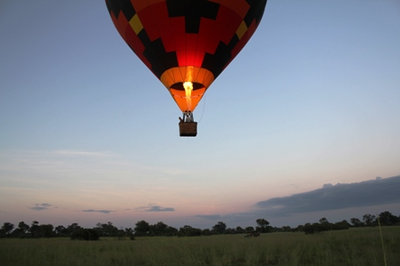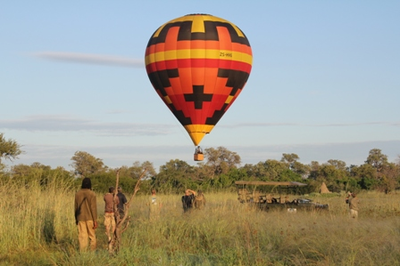This is a first for the Okavango and is available from 01 September 2015 to 30 November 2015 and from 01 May 2016 to 30 November 2016
|
The Okavango Delta represents one of the last truly unspoilt wilderness areas in Africa, and remains one of nature's marvels. Guests can now enjoy unique vistas with hot air balloon safaris over the unique Okavango Delta from Kadizora Camp. This is a first for the Okavango and is available from 01 September 2015 to 30 November 2015 and from 01 May 2016 to 30 November 2016 The water levels of the Delta are affected by: the local rainfall in the various areas of the Delta;
the seasonal rainfall in the Angolan Highlands that feed the Delta Generally speaking, there are two peaks in water levels: the first is around February, when the localised rains fill the Delta water ways. This is usually followed by a dry period, and the water levels subside until about May, when the flood waters from Angola reach the Delta. These waters continue to push their way south and the southern areas of the Delta often receive the floods as late as July or August. From late August and September, the region starts to dry out and the water levels in the Delta slowly subside, until next year in February when the local rains start the cycle again. The Delta never actually dries up completely, as the main channels always have water, but it does restrict the use of boats and mekoro in some areas, due to a combination of water levels, vegetation growth, changes in the Okavango’s channel-structure, and hippo activity, amongst others. These can and do change quickly and unpredictably. |
|


 RSS Feed
RSS Feed
